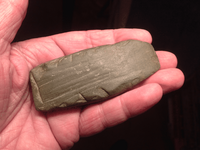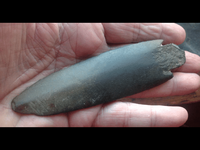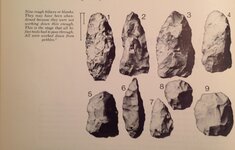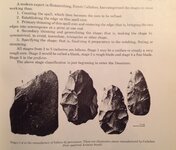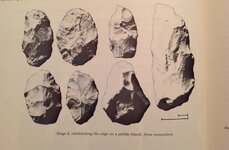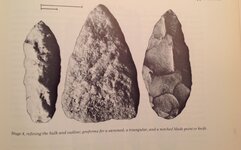billvettman
Tenderfoot
Here is an item I found years ago as a kid, anyone know anything on this Ma. find.http://www.treasurenet.com/forums/a...tachmentid=1513010&d=1509970737&thumb=1&stc=1
Attachments
Upvote
2
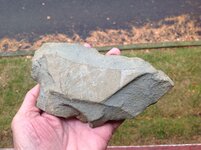
I think what can fool folks here is the fact that it's likely in an unfinished stage of production, as well as the appearance of poor quality lithics common to New England pieces. If you don't know our regional rhyolites, it can look like a rock, more so if the piece is still a stage and not finished. If I had to guess type, the type of shoulders and the lobate shape stem suggests Adena related, but normally the stem would not be that short on an Adena related piece. Another possibility would be a Lagoon point, but that's questionable as well because the shoulders are almost always much weaker in Lagoons. Still a piece of prehistory, and hence still a nice find, IMHO....
Edit: here is an example of a poor New England lithic, argillite of a type that is argillaceous slate(in contrast, Pa argillite is argillaceous shale), showing the original cobble cortex and a minimum of reduction or flaking. In this instance, it's actually a finished piece, as this is an end pick, which was a tool used in steatite quarrying in southern New England. But, I have to imagine it could easily be judged as "just a rock" if one is simply not used to seeing lithics as poor as this....
View attachment 1513031
If thats an artifact then I got thousands of slate artifacts sitting in my yard. In fact I create them every time I dig a fence post hole and have to break out the breaker bar to remove the rocks. Is there really evidence of slate being used to stone tools? seems like a poor choice.(not trying to offend I really am just ignorant on the subject and this seems unlikely from my life experiences that these are artifacts)
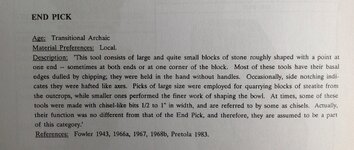
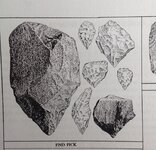
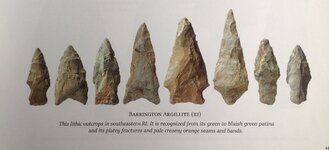
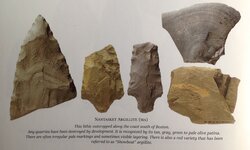
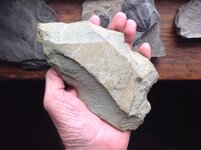
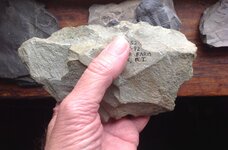
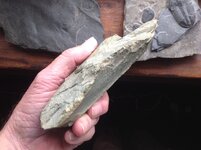
No offense meant, but not sure why people want to collect "maybes" instead of real artifacts. I see nothing in pictures that say artifact, at best it is a "maybe".
Sent from my P008 using Tapatalk
Lol, well, we'll have to agree to disagree. New England collectors, and I've shown the photos of the artifact to 8 southern New England collectors since yesterday, were universal in recognizing it as a piece of rhyolite showing obvious work. Guys from outside our region who think they know better have a right to their opinions, but this could not be more obvious. The editor of one of our regional guides was actually incredulous that folks thought it was just a rock. Whatever, there's nothing "maybe" about it. It's very obvious. I'm actually not sure why people would doubt me here in fact. Been collecting in southern New England since the late 50's. Sorry to have to disagree, but I just know far more then you do in this instance. You have absolutely no experience collecting in southern New England and no experience recognizing a stage in artifact production, when a poor lithic is concerned.
http://www.treasurenet.com/forums/a...asset.php?fid=1246163&uid=121940&d=1510005072
Here are more photo's showing the other edge and thickness of the peace. I hear what Tpmetal is saying buy it looks like nature could have flaked the top area (big chunks) but it looks like edge flaking as well to sharpen. I thought it was a Knife as well, someone said years ago that it might be a point for whaling. I think Charl's statement that it is an unfinished peace sound's good to me and I would like to think thats what it is. The peace was found on my property back in the 60's and there is no slate there.
Thanks for all the help as I am new to this arrowhead hunting but I am learning thanks to you all.http://www.treasurenet.com/forums/attachment.php?attachmentid=1513140&d=1510007289&thumb=1&stc=1http://www.treasurenet.com/forums/attachment.php?attachmentid=1513142&d=1510007397&thumb=1&stc=1
If thats an artifact then I got thousands of slate artifacts sitting in my yard. In fact I create them every time I dig a fence post hole and have to break out the breaker bar to remove the rocks. Is there really evidence of slate being used to stone tools? seems like a poor choice.(not trying to offend I really am just ignorant on the subject and this seems unlikely from my life experiences that these are artifacts)
